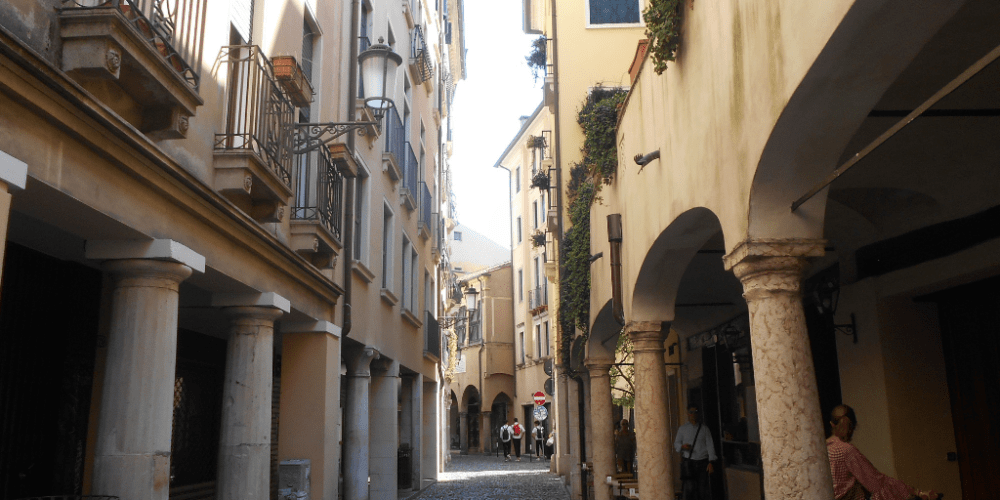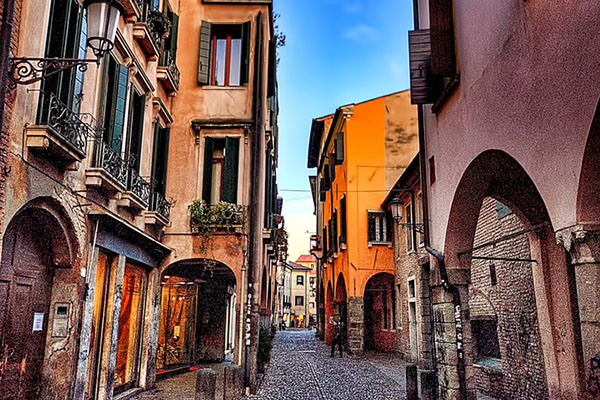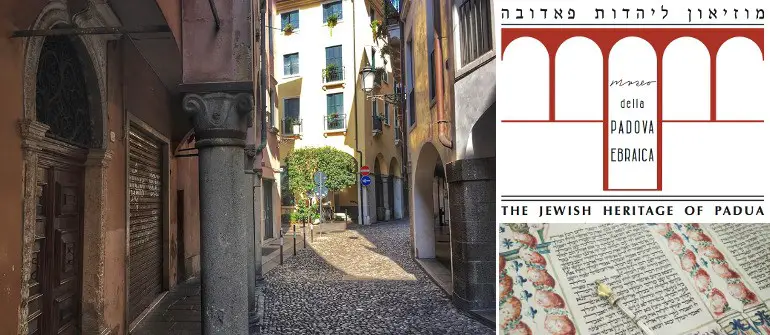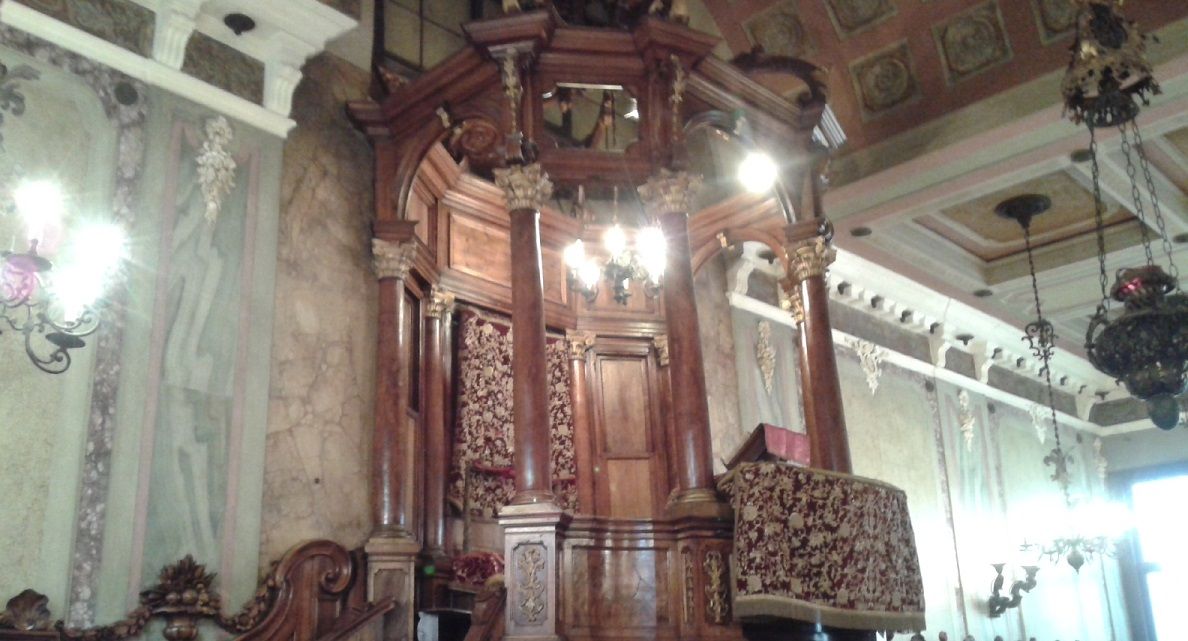


The heart of ancient Padua located between the squares and the Cathedral contains another heart: the area of ??the ancient Jewish ghetto. Among these narrow and narrow streets that branch off from the main axis of Via S.S. San Martino and Solferino in the streets: "Dell’arco", "dei fabbri", "Squarcione", "Gritti" and "Soncin" tells a very ancient story: that of the Jewish settlement in the city; of its commercial, social, cultural and religious history.

In the past, among these dark arcades scattered with low-cost taverns and bars near the Piazza del vino (now Piazza delle Erbe), students and professors of the ancient university used to borrow at the Jewish stalls, the busy shops formed a specialized shopping center indispensable for the city. "... strazzaria (second-hand dealers) of all sorts": "caregas, litter boxes, old and new gold choirs, chubs" and more: cloths of all sizes: rasets, broccatelli, storms, drapes, robe de seda, fustian, bambasine, meze lane, blanket, schiavine, grogani, canvases from Flanders .. "but above all very important rabbis and Talmudists of the time held their schools, remember: Yehaudah Minz Ha-Levi (1408-1509) founder of the local rabbinical academy which was based in the building which today houses the Hotel Toscanelli, Meir Isaac Katzenellenbogen (1482-1565) and Mosè Chayym Luzzato, intellectual precursor, rabbi and poet who with his circle of kabbalistic studies attracted students from all over Europe.

The entire architecture of the Ghetto gives us this almost intact history. The Romanesque layout of the streets and lots is the original one but has developed in height with a very particular weaving of mixing styles and assembly of recycled materials such as: columns of various origins, capitals, coats of arms, inscriptions (V. Martino and Solferino civ. 16-12) baroque wrought iron railings, female and virile heads supporting flues (V. Martino and Solferino civ. 10) heads depicting Jewish traders holding balconies (V. Dell'Arco) stone portals, mullioned windows , sixteenth-century frescoes and chimneys together with eighteenth-century windows and balconies and wooden doors, witnesses of the continuous alterations dictated by the housing and representation needs of a community that is always on the move and forced into a very limited space.

Arnaldo Fusinato writes:
"When the evening bell, / With his hat over his eyes and his face bowed, / like the thief he is pursued, / you drive away with your dear bundle / Pegli dark alleys of the ghetto // and you have reached a dark door , / You pull the rope like a man who has a press; / At the sound of the ringing bell / a shutter opens, and a cracked voice / like the screech of a hungry harpy / It rains from above to ask who it is. student you answer: and quickly / At that name the door opens wide./ And at the top of a narrow narrow ladder / You see appear pale and dull / Isachetto's romantic face .// You ascend and, ascend; and at least after half an hour / you arrive panting at the fifth apartment: / The good old man opens a door then, / And with his cap in his hand he puts you in / To a large Rococo hall / Upholstered with cloaks and paletots. a pair of spectacles / greedily unfolds your burden, / and there on four feet without matchmakers, / you leave your cloak in storage, / And he throws a sovereign in your hand / that to make it big can drop a grain .// Oh humanitarian Ghetto, oh dear ghetto, / the earth intones a song to your praises! / You father are of those who have no money, / You wipe the eyes of the crying baby, / And watchful you fly from moths to teeth / The cloaks of poor students."

That our student "in the bill" has passed by the Lenguazza court to pledge the cloak and drink it read?

It is in this courtyard which is accessed from a porch in via S.S. Martino and Solferino who, as in a game of Chinese boxes, we discover another heart in the heart: that of the ancient Jewish community which here had its cultural and religious center, its Midrash, the Granda Synagogue (the Paduan Jewish community counted three synagogues as well as other places of study.
The sixteenth-century synagogue of the Italian rite, the Spanish one and the German one the largest that had access from this court) the Miqweh (ritual bath tub) and the kascher butcher's shop.

In this evocative court, the inscription of the keystone of the Trieste house portal (now the door on the back of the Fabbri tavern) reads "Moisè Quondam Jacob Trieste".
Today the Jewish ghetto gives us this story that still continues: yesterday as then, university students frequent these streets dotted with cafes, taverns and restaurants and the Paduans love to retire among these arcades in search of objects that cannot be found elsewhere, among small shops refined and particular merchandise, among the workshops of fabrics, fabrics, antique prints, among the junk dealers, the ant
Ghetto of Padua - Jewish Community
Address: Via S. Martino e Solferino, 19-11, 35122
Phone: 049 8751106
Site:
http://moked.it/padovaebraica/Location inserted by
Tesori del Ghetto